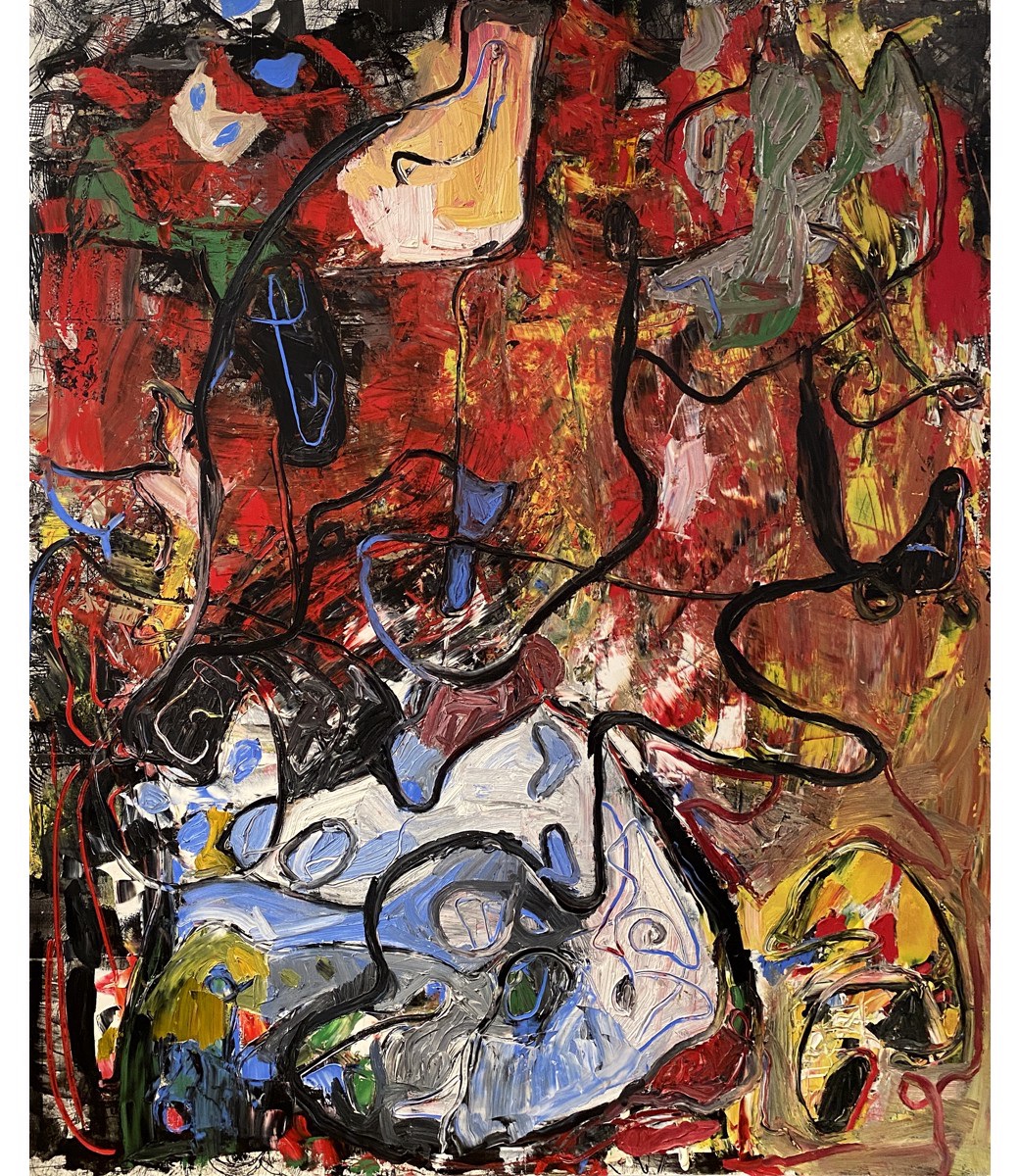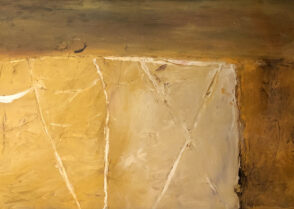Dick Wray
(American, 1933-2011)
Untitled, 2007
Oil and mixed media on canvas; 72 x 60 inches
Gift of Linda and William Reaves, The Linda and William Reaves Collection of Texas Art at UHV, 2022
Artist James “Jack” Boynton once remarked, “Dick Wray used to say that in the 1950s, if Dorothy Hood, Richard Stout, he and I had been riding in the same car and it had gotten hit, it would have wiped out art in Houston. There were not a lot of people that were doing anything very avant-garde, you know.” This morbidly amusing quip speaks volumes about Houstonian Dick Wray. Born in 1933 and raised in Houston, Wray graduated from Lamar High School in 1953. Following graduation, he enlisted in the Army. In 1955, Wray received an honorable discharge and enrolled in the University of Houston’s School of Architecture. In 1958, he left Houston for Europe. In Europe, Wray was introduced to new artistic ideas and movements, including CoBrA and other modes of abstraction. At age twenty-six, Wray returned to Houston armed with inspiration. In the years following his return, he exhibited at the Museum of Fine Art, Houston, the Contemporary Arts Museum Houston, and the Dallas Museum of Art. Between 1969 and 1982, Wray was on the faculty at the Glassell School of Art. His works have entered numerous permanent collections including the Albright-Knox Museum and the Museum of Modern Art.
Despite his inspirational ties to New York City’s Abstract Expressionism and the Parisian avant-garde, Wray’s style was unique and distinctive, though never wholly consistent. In reviews and journals, scholars, critics, and dealers gravitate to the names Pollock and Matisse when writing about Wray’s art. This helps orient the viewer, providing an artistic vernacular and conceptual outlook. Looking at Untitled, there is Kandinsky’s lyricism, Pollock’s balance, Basquiat’s graffiti, Kline’s materiality, and Twombly’s daring. Just as a writer might allude to Shakespeare using a distinct turn of phrase, Wray’s Untitled employs the languages and styles of other artists to create new meaning. Untitled is derivative, but only in so much as Eliot’s poetry echoes that of Chaucer or Ferlinghetti’s writing is steeped in Whitmanian verse. Like a favorite poem with its lines and rhymes rearranged, Untitled reorganizes and reworks the familiar. But to fully appreciate Untitled, the viewer must push past the familiar. When an author alludes to another artist’s work, it is not enough to merely acknowledge this relationship. Rather, one must explore the purpose of this relationship, what it evokes and why. Through recognizing Pollock’s balance in Untitled, the viewer takes one step toward connecting with the work. Through thinking about the nuanced way Wray incorporates the language and lyricism of abstraction as developed by Pollack, the viewer takes a large leap toward connecting with Untitled.
Location
University of Houston-Victoria
STEM Building

